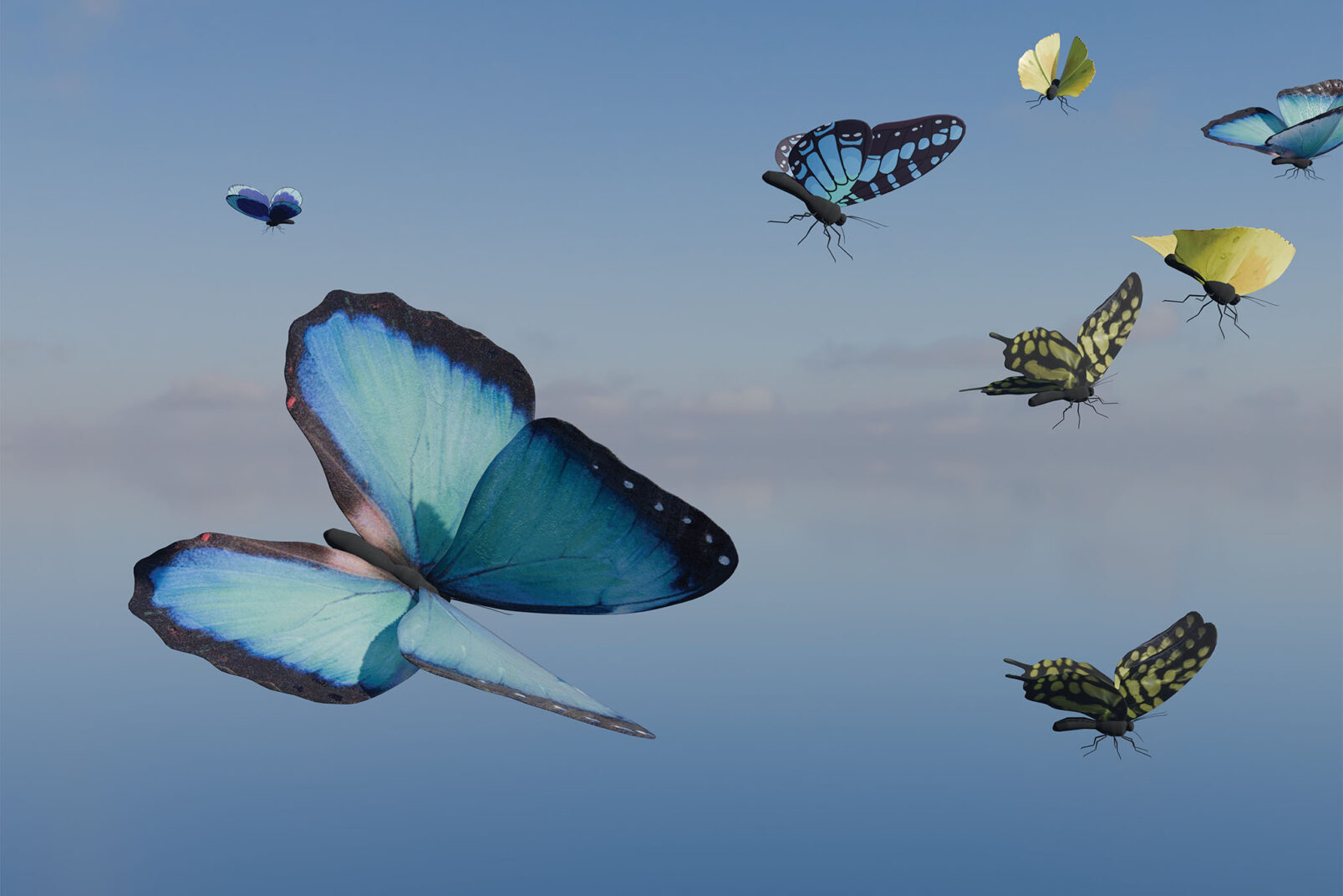On a quiet June morning in suburban Honolulu, Taiji Terasaki was busy working with crystals. The 66-year-old artist has since completed a series of paintings—along with sculptural works, customized shoji doors, and tea ceremony bowls—for an exhibition on view at the historic temple Ryosoku-in in Kyoto in the fall of 2025. A central theme of the exhibition is the seasonal migration of the Asagimadara, a native Japanese butterfly that flies from Hokkaido, in northern Japan, to Vietnam each year. Terasaki’s show, titled Wings Over Crystalline Landscapes, juxtaposes the fragility and impermanence of these creatures with the slow-forming crystals hidden just beneath the soil along their migratory route.
In Japan, the Asagimadara—also known as the chestnut tiger butterfly for its distinctive brown, black, and white markings—has relied on the nectar-rich blossoms of the Fujibakama, a critically endangered plant, for centuries. But as urbanization and climate change alter the butterfly’s migratory corridors, the Asagimadara in turn alters its course to follow the blooms of various milkweed plants and thistles that grow from Hokkaido to Vietnam.
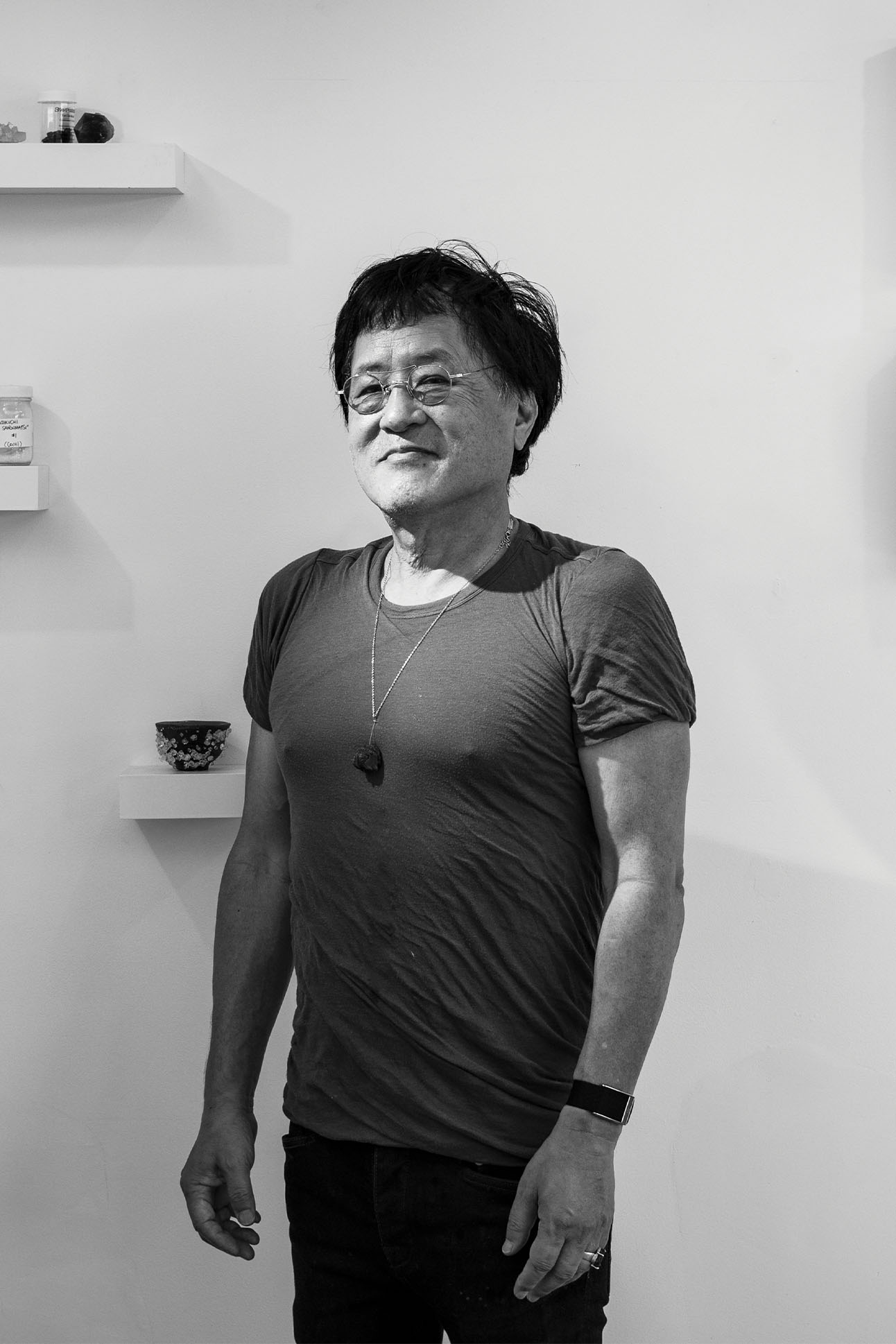
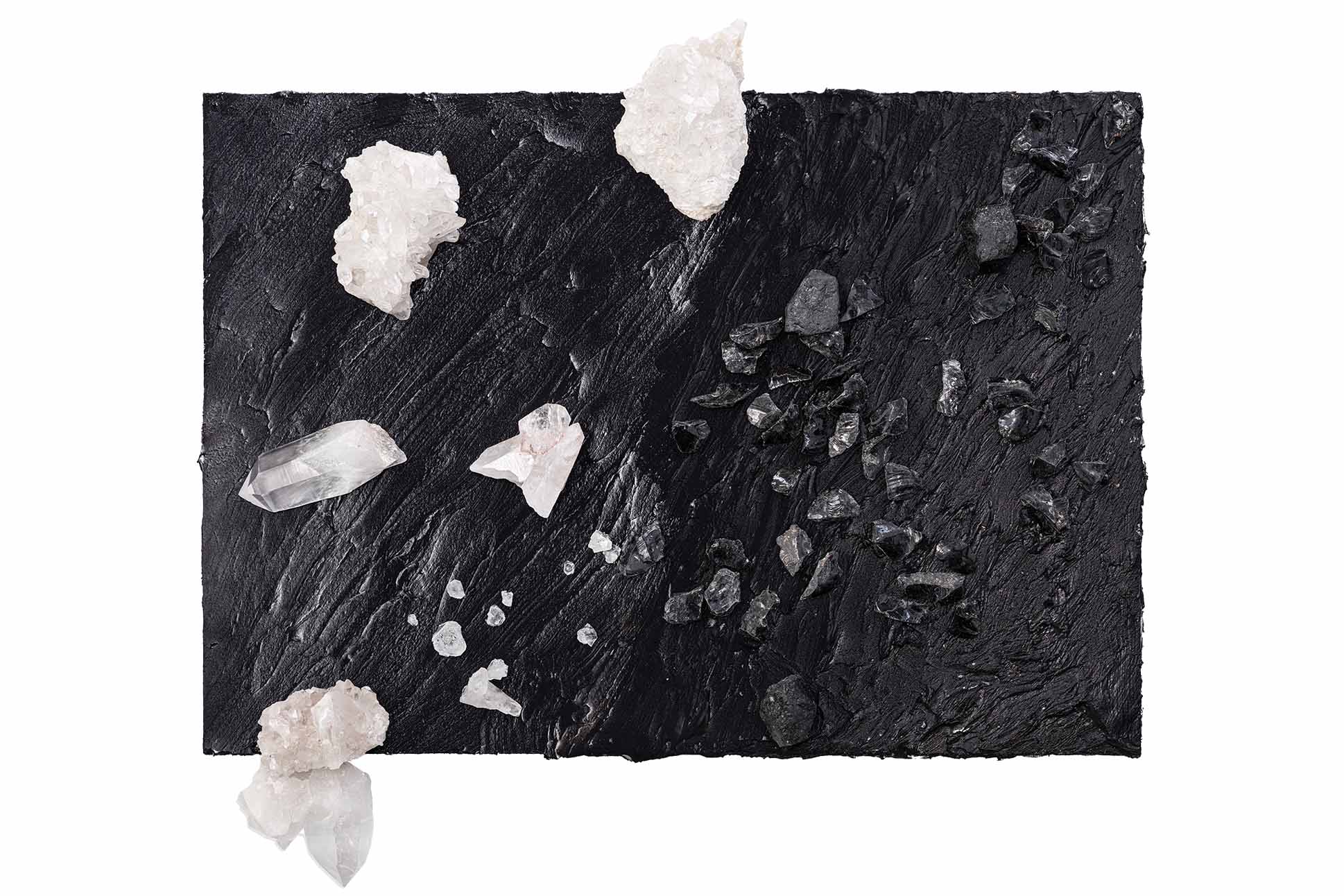
Butterflies emerged as a theme in Terasaki’s work in 2023, after Toryo Ito, the vice abbot of Ryosoku-in, stayed with him in Honolulu. The two first met at an exhibition in Kyoto, where Terasaki and his wife, Naoko, own a home. The couple were frequent visitors to Ryosoku-in, and Ito soon invited Terasaki to exhibit there through the temple’s contemporary art program. A subtemple of Kenninji, Ryosoku-in is one of the oldest Zen temple complexes in the country’s former imperial capital. “There are all these different aspects of the temple and grounds that are very beautiful in a traditional way, and yet I will be able to do contemporary installations in the space,” he says.
On his 10-day visit, Ito and Terasaki walked in the forest in Maui’s lush ‘Īao Valley and sat in the river, discussing art and Zen. Ito explained that Japanese art, especially the work shown at Ryosoku-in, must be tied to the seasons. He spoke of the kaleidoscope of Asagimadara butterflies that used to come through Kyoto. Later, as Terasaki began developing a fascination with crystals, the image of the butterfly’s migration presented a striking contrast. “Crystals take deep time—eons—to develop,” Terasaki says. “The butterfly goes from one territory to the next throughout its short life, and then their offspring fly to the next point.”
Crystals take deep time—eons—to develop. The butterfly, in contrast, goes from one territory to the next throughout its short life, and then their offspring fly to the next point.
Taiji Terasaki, artist
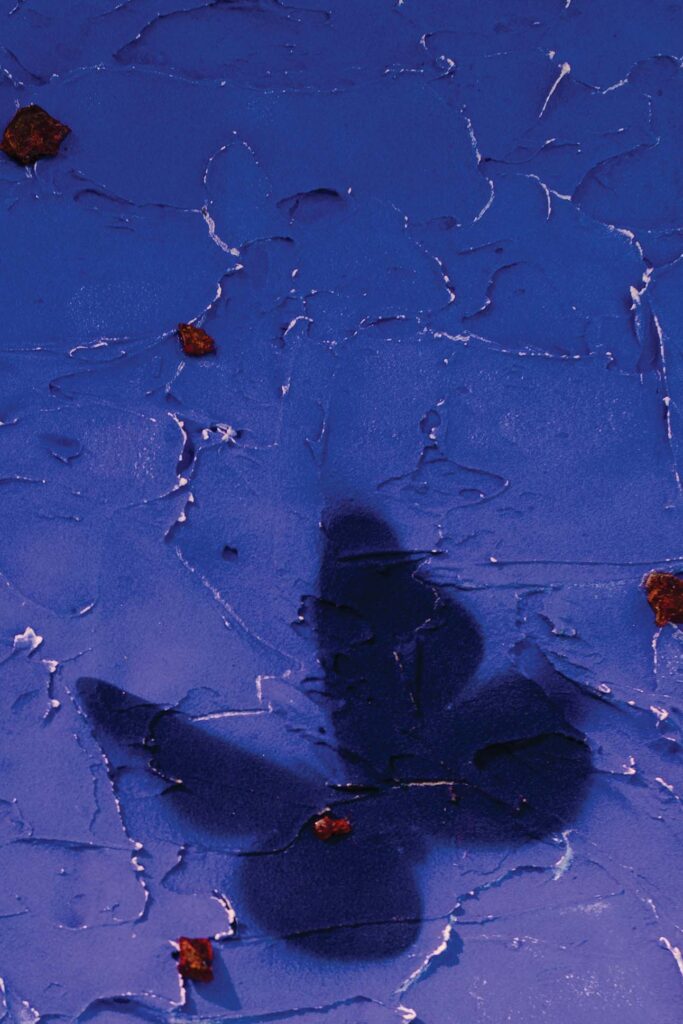
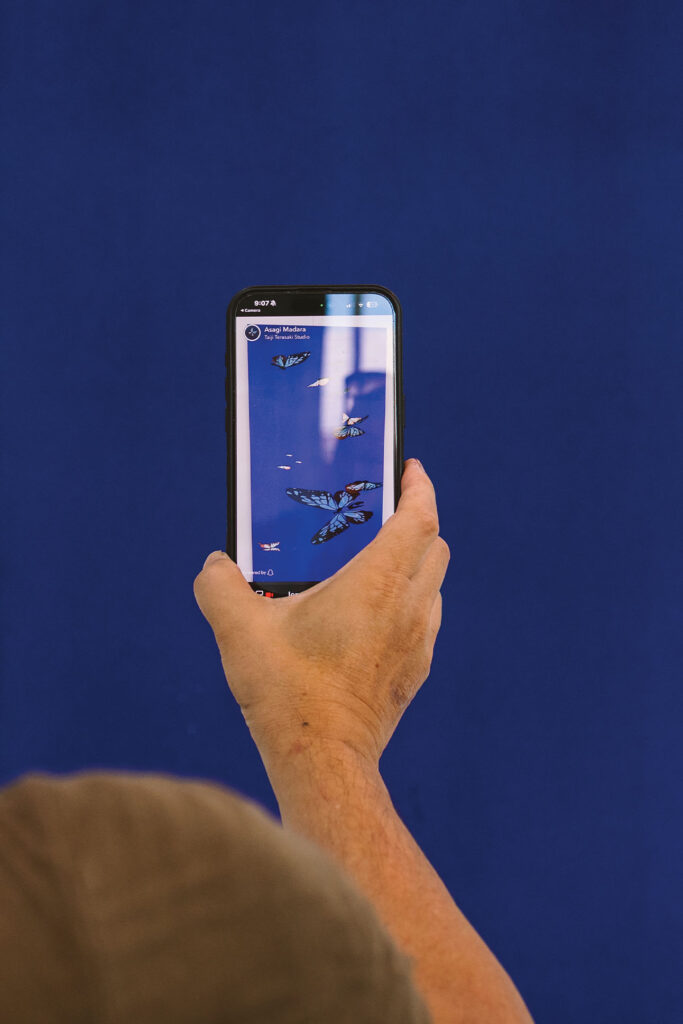
Science loomed large in Terasaki’s family. His three siblings all went into medical science, following in the footsteps of their father, an immunology researcher at the University of California, Los Angeles. Terasaki, however, took after his artist mother and dove into art as a teen. As a college student, he joined the progressive art program at UC Irvine, known for breeding experimental artists such as Chris Burden. (Burden’s many subversive acts included locking himself in a locker for five days and having a friend shoot him in the arm as part of a performance piece.)
Teachers emphasized vision over technique and encouraged students to take risks. With limited technical knowledge, Terasaki learned to find inventive ways to realize his conceptual ideas and was introduced to a range of performance and installation art. Today he has a seven-person studio team, mostly University of Hawai‘i graduates, who help actualize his creative inclinations, from growing crystals to developing virtual butterflies for the Ryosoku-in show.
The curious fusion of analog and digital media that Terasaki employs in Wings Over Crystalline Landscapes began, in many ways, with his introduction to azurite. Terasaki was showing in Paris in 2025 when he first encountered the deep-blue mineral. Used in nihonga—a 19th-century style of Japanese painting in which mineral pigments produce a wide range of richly layered colors—azurite shimmers with varying intensity depending on the size of its particles. Terasaki wondered how the material might behave in a more contemporary context.
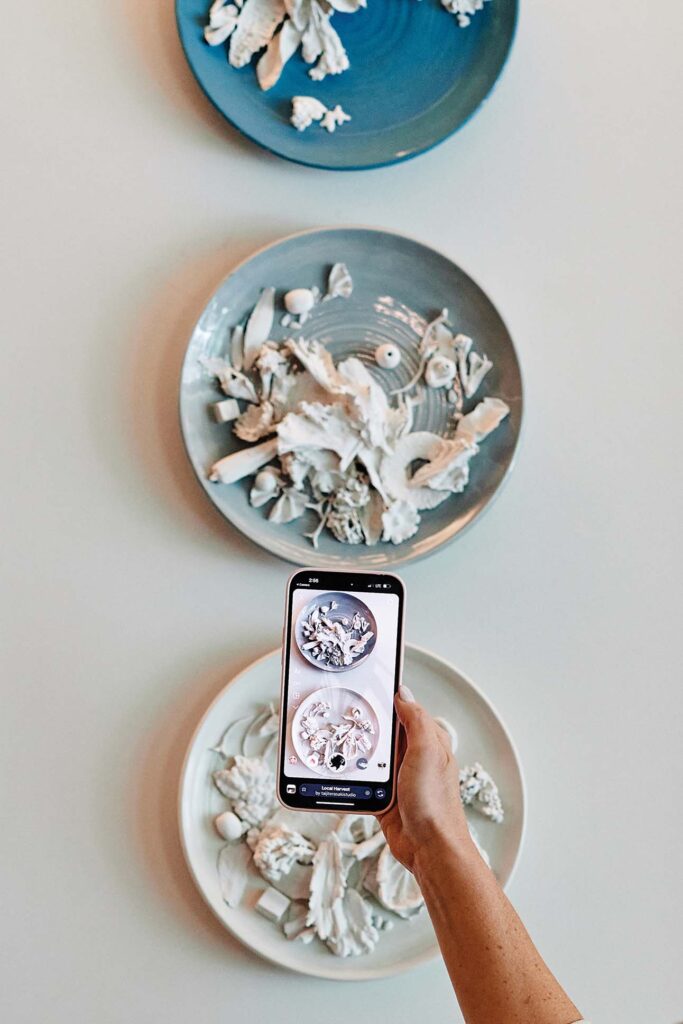
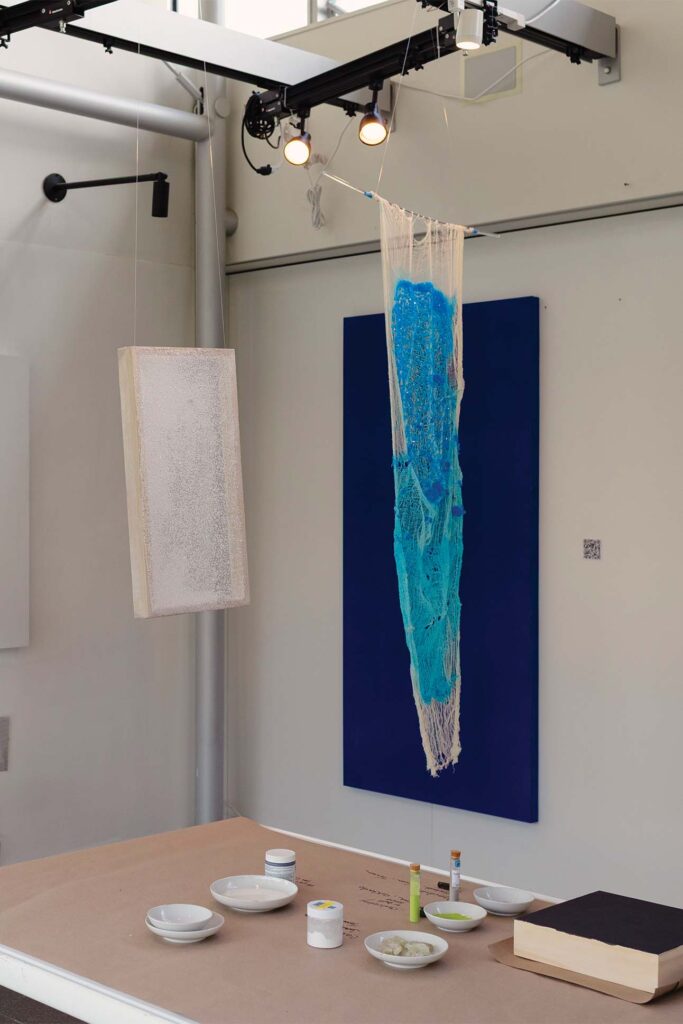
In the exhibition at Ryosoku-in, this azurite color field forms the backdrop for an augmented reality (AR) experience. To the right of the piece, viewers scan a QR code to watch blue butterflies flit across their smart phone screens, overlaying their in-phone view of the painting. Terasaki often uses AR to add dynamism to more minimalist or abstract pieces. Here, the azurite color field is layered with animated Asagimadara flying toward the viewer. “Hardly anyone had ever done a color field with this material, so I was very excited about it,” Terasaki says, pointing to a rectangular blue canvas hanging on his studio wall. “If you look closely, you’ll see that it sparkles.”
This same affinity for azurite’s materiality extends to Terasaki’s ongoing attraction to crystals as a whole. While he’s wary of the New Age adoption of crystals as aura-enhancing tools, he’s captivated by their natural formations and anticipates creating a new body of work inspired by them. “They have a pattern they have to follow,” he says, alluding to their symbolic parallels to Zen philosophy. “That pattern requires stillness and deep time.”

